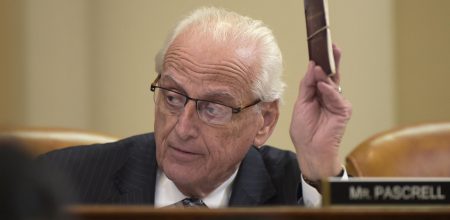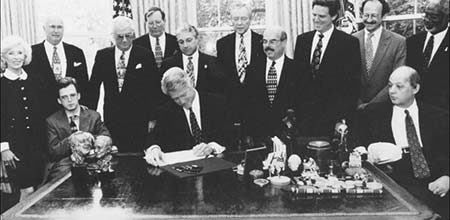Post-Acute Care (PAC) Principles to Guide Unified PAC Payment System Development from a Brain Injury Rehabilitation Perspective
Categories: Brain Injury, Health Care Reform | Download Post-Acute Care Principles to Guide Unified PAC Payment System Development from a Brain Injury Rehabilitation Perspective
Purpose: As Congress, the Centers for Medicare and Medicaid Services (CMS), and the Medicare Payment Advisory Commission (MedPAC) continue to consider the design and eventual implementation of a Medicare unified post-acute care (PAC) payment system that cuts across all four settings of post-acute care (LTACHs, IRFs, SNFs, and HHAs), the Brain Injury Association of America (BIAA) strongly urges consideration of the following guiding principles:
Interdisciplinary Rehabilitation Treatment Team: PAC services should be provided by an interdisciplinary treatment team in which all of its members participate in a coordinated effort toward the same goal to benefit the patient, the patient’s significant others, and caregivers. This team brings a diversity of expertise to the beneficiary, including physicians, clinicians, rehabilitation and general practice nurses, skilled therapists, direct care staff, and many other unique providers of brain injury services. Any unified PAC payment system should ensure that the interdisciplinary team approach to brain injury rehabilitation is preserved and strengthened.
Rehabilitation Therapy Services: A unified PAC payment system should not set arbitrary barriers to access that prevent patients from receiving appropriate care. The therapy services provided should be tailored to individual needs. The type of rehabilitation therapy provided should be delivered in the context of the patient’s real-life activities that will be pursued in the home or community after discharge from a hospital or other post-acute provider, including residential and transitional brain injury treatment programs. These types of services include activities of daily living such as self-care, community mobility, transfers, environmental problem-solving, functional mathematics, therapeutic recreation, and other services to enable independent living. Clinicians should then assess and structure the treatment intensity so that the treatment plan carried out by physicians, therapists, and direct support staff are continuously re-evaluated based on the individual’s response to treatment and targeted goals.
Cognitive Rehabilitation Therapy: Cognitive rehabilitation therapy is the basis of brain injury rehabilitation. Cognitive problems change over time for individuals with brain injury and may evolve at a different pace for each person with many interacting factors affecting initial recovery, and recovery over time. Cognitive disorders make it difficult for some individuals with brain injury to monitor changes in their daily health or to reliably comply with medical treatment regimens. Cognitive rehabilitation is a systematically applied set of medical and therapeutic services designed to improve cognitive functioning and participation in activities that may be affected by difficulties in one or more cognitive domains. A unified PAC payment system must recognize and account for the cognitive needs of Medicare patients, particularly individuals with brain injury, including stroke.
Prioritize Functional Outcomes: Regaining and increasing function after illness or injury is a primary goal of PAC and should be prioritized within a uniform PAC payment system. PAC providers must constantly monitor and assess their performance against a series of functional performance indicators and targets. Policymakers must work with stakeholders to develop robust functional assessment measures for PAC across settings of care that are as objective as possible and resistant to “gaming.” By setting specific, measurable goals and outcome measures and by tracking performance across time and settings of care, providers and health systems can determine the degree to which they are achieving the desired functional outcomes for persons served.
Provide Training Opportunities: To maintain the specialized expertise necessary to treat individuals with mild, moderate, and severe brain injury, PAC settings, especially inpatient rehabilitation hospitals, and units, must continue to serve as the training ground for rehabilitation physicians and other rehabilitation professionals under any unified PAC payment system. Such facilities should employ persons credentialed by the Academy of Certified Brain Injury Specialists. Federal payment policy must continue to incentivize training opportunities for rehabilitation professionals to preserve access to rehabilitation care in the future, including PAC settings with varying degrees of intensity.
Social Determinants of Health: There is growing recognition in the public health community that information about social determinants of health (including aspects of the patient’s environment, the economic climate, demographic factors, and availability of community resources) is essential to understanding the complete set of patient needs and appropriate interventions. A uniform PAC payment system should encourage the consideration of social determinants in developing a treatment plan including the relevant rehabilitation needs and interventions required by each patient with his or her own unique set of circumstances.
Access to Care: Brain injury is not a one-time event; it can become a chronic condition that impacts an individual throughout his or her lifetime. Although the United Nations has identified health care as a basic human right, evidence shows that people with disabilities often have lower levels of health than the general population. This problem is associated with a lack of access to health care services and programs. The same is true for individuals living with a brain injury, particularly those who lack access to health care and rehabilitation services when, over the course of their lives, their brain injury manifests itself. Regardless of education, socioeconomic factors, financial hardships, time since injury, age, comorbidities, and insurance status, individuals with brain injuries must be evaluated for appropriate levels of services to meet their individual needs. Any unified PAC payment system must provide and enhance access to care.
Accounting for Complex Conditions: The severity of conditions and patient characteristics that drive patients to PAC cover a broad spectrum of complexity. Patients with severe conditions and complex injuries necessarily require more intensive care than those with less serious injuries, and policymakers must take care not to create unintended consequences for complex patients when creating a unified PAC payment system. A payment system that does not recognize the extensive needs of individuals with severe conditions such as brain injury, stroke, and other neurological conditions will, by definition, deny patients access to the care to which they are entitled. Any unified PAC model should be tested before implementation and phased-in to ensure continuity of PAC services. Particularly complex conditions, such as brain injury and stroke, should be exempt from initial inclusion in a unified PAC payment system unless and until the system is ready to include these patients without compromising access to quality care.
Behavioral Adjustments: A unified PAC payment system must be accurate and sufficiently compensate providers to ensure access to patient care. Reductions in provider payments based on unsubstantiated assumptions about provider behavior when transitioning to a unified PAC payment system would threaten the availability of PAC services by imposing significant financial burdens on providers. PAC payment policy should not include unnecessary behavioral offsets without robust evidence to support these adjustments.
Please contact Susan Connors, President/CEO at shconnors@biausa.org with any questions.
Adopted by the Board of Directors of the Brain Injury Association of America on October 28, 2019












